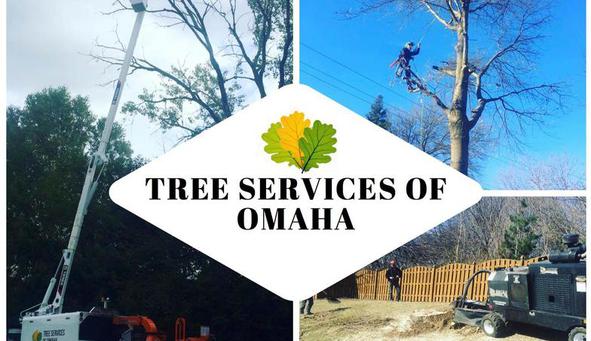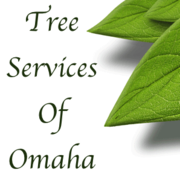Tree Services of Omaha - Omaha, Nebraska
Bacterial Leaf Scorch - Tree Diseases
by David Steg on 10/06/14


Bacterial Leaf Scorch
Leaf scorch, sometimes called marginal leaf burn, describes the death of tissue along the edge of the leaf. This symptom develops when sufficient water does not reach the leaf margin cells. This can occur if 1) there is insufficient moisture in the soil 2) water is lost too quickly from the leaves to be replaced adequately, 3) roots have been killed by plant pathogens, excavation, or compaction or 4) fungi or bacteria invade and plug the water conducting vessels (xylem) in the plant.
One living organism found to inhabit the xylem and cause leaf scorching is Xylella fastidiosa. These bacteria are small (0.25-0.5 X 1.0-4.0 um), stain gram negative, have no flagella, do not form a spore, have a thick rippled cell wall, and do not grow on conventional bacteriological media. Xylella has been associated with leaf scorch on oak, elm, sycamore, mulberry, red maple, and sweetgum, and, Pierce's disease on grapevine, phony peach disease, plum leaf scald, periwinkle wilt, almond leaf scorch, alfalfa dwarf, and ragweed stunt. Phony peach disease was first reported in California in 1890 and Pierce's disease on grapevines (Vitis vinifera L.) in 1892 in California. Elm leaf scorch has been observed in the Washington, D.C. area since the 1950s. Bacterial leaf scorch on pin and red oaks is widespread and severe in eastern Pennsylvania and is known to be spreading westward.
The following plants have been found to harbor Xylella in the U.S.:
? poison hemlock (Conium maculatum L.)
? peppervine (Ampelopsis arborea (L.) Koehne)
? umbrella sedge (Cyperus eragrostis Lam.)
? American beautyberry (Callicarpa americana L.)
? dallis grass (Paspalum dilatatum Poir.)
? blackberry (Rubus sp.)
? wild strawberry (Fragaria vesca L.)
? grapes (Vitis)
? miner's lettuce (Montia linearis (Dougl.) Greene)
? eastern baccharis (Baccharis halimifolia L.)
? blackberry (Rubus procerus P.J.Muell.)
? sumac (Rhus sp.)
? periwinkle (Vinca minor L.)
? goldenrod (Solidago fistulosa Mill.)
? American elder (Sambucus canadensis L.)
? peach (Prunus persica (L.) Batsch)
? Virginia creeper (Parthenocissus quinquefolia (L.) Planch.)
? English ivy (Hedera helix L.)
? Boston ivy (Parthenocissus tricuspidata Siebold & Zucc .) Planch.
Red Maple Leaf Scorch
Leaf scorch occurs on localized, individual branches and more branches are affected each year. While leaves appear normal early in the season, leaf discoloration begins at the leaf margin and migrates with an undulating front toward the midrib and base of leaf beginning mid to late July. The light brown dead tissue along leaf margin is frequently bordered by narrow to wide zones of dark reddish brown tissue. The dead tissue is separated from green tissue by a narrow but distinct yellow border or halo. Premature defoliation can occur in late August. This disease may make affected trees more sensitive to damage caused by site-related stresses such as deicing salts and limited growing space.
Elm Leaf Scorch
Leaf margins die and have a distinct yellow border separating the dead tissue from the green tissue. Scorching begins on leaves at the base of the tree and moves upward through the canopy. Leaves on branches that were affected during the previous season appear normal in the Spring but later show symptoms. Some premature defoliation may occur. Affected trees are very attractive to elm bark beetles and are much more susceptible to Dutch elm disease than trees free of leaf scorch.
Oak Leaf Scorch
This disease affects primarily pin and red oak but has also been found in white oak. Leaf margins die and have a distinct yellow border separating the dead tissue from the green tissue. The symptoms progress toward the base of the leaf in an undulating front. Defoliation is not usually a symptom on red oak but water sprouts (epicormic shoots) develop on red oak as the disease progresses. In Georgia, the bacteria were successfully isolated from twigs November to January but not from February through July. White, black, swamp, scarlet, southern red, shingle, bluejack, turkey, laurel, bur, water, pin, willow, chestnut, northern red, shumard, post, and live oaks are known to be susceptible to this disease.
Sycamore And London Plane Leaf Scorch
In late June or July, olive green discoloration of leaf margin develops and the margin dies. Affected leaves remain attached. The leaves at branch tips are the last to scorch or may not scorch at all. Trees with a history of scorch are slow to leaf out and develop fewer leaves and smaller leaves than scorch-free trees. Branch dieback and tree death eventually occurs.
Mulberry Leaf Scorch
A marginal, undulating leaf burn with a yellow halo progresses on leaves from the base of the tree upward and from base of limbs outward. Severely scorched leaves fall, leaving tufts of leaves at branch ends. Branch dieback occurs. Xylella, pathogenic on mulberry, is also pathogenic on sycamore and vice versa.
Dogwood leaf scorch
The tips and margins of leaves burn toward the base and midrib of the leaf. Symptoms on Cornus florida and Cornus kousa are almost indistinguishable from those caused by drought.
Spread
Nymph and adult spittlebugs, treehoppers, and leafhoppers are known to carry Xylella from plant to plant. Once the bacteria are picked up, they are in some cases immediately transmittable or, in other cases, have a 2 hr. latent period before they are transmittable. The insect will continue to carry the bacteria until it molts and the bacteria can actually multiply inside the insect foregut. As the insect feeds, bacteria are egested into the feeding site..
Diagnosis
Although the symptoms seem distinctive, it is difficult to be certain of the cause of a marginal leaf burn. Commercial diagnostic services can confirm the presence of Xylella.
Management
It requires several years for the bacteria to kill trees. The bacteria may be so widespread in the wild plant population that removal of infected trees may not prevent the spread of the bacteria to neighboring trees. The antibiotic tetracycline, when injected into an infected tree, will temporarily alleviate the symptoms during the year of injection but does not cure the tree of the disease. As the tetracycline breaks down in the tree, symptoms reappear in years where no injection is performed. No other treatment has proven to be effective in alleviating symptoms.



